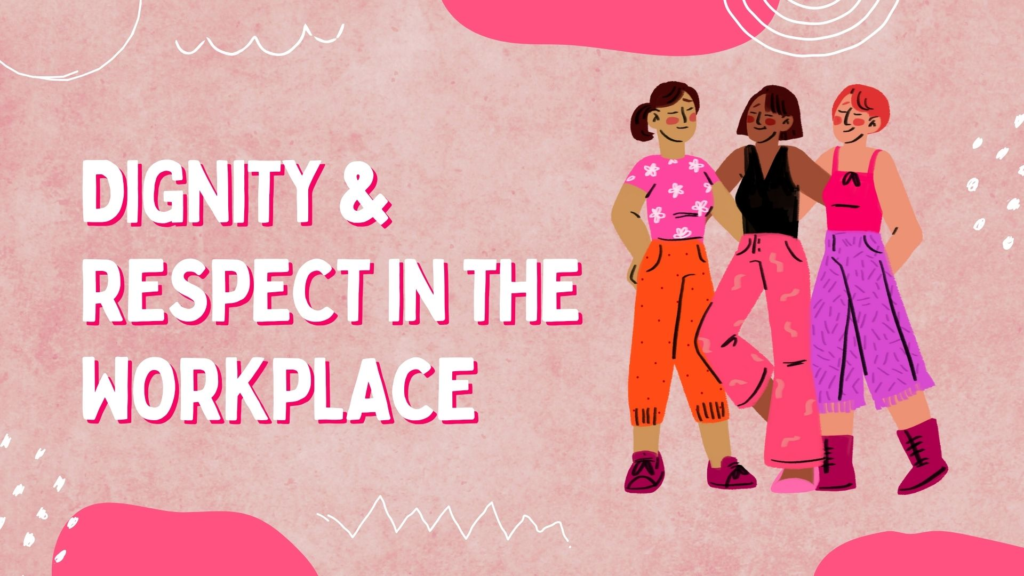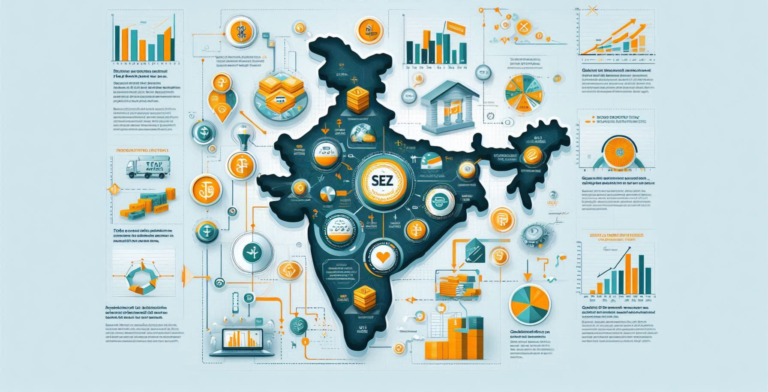
Abstract
Sexual Harassment is not a mere issue but serious violation of constitutional rights of women. This paper examines and analyses how sexual harassment infringes the fundamental rights of women under the Constitution of India. It emphasizes that having a safe and respectful work environment is a basic right guaranteed to everyone under Articles 14, 15, 19 and 21 of the Constitution of India. The paper highlights how sexual harassment affects the psychological health, social surroundings and professional growth of women in her workplace. It further argues that sexual harassment can be faced by anyone, anywhere and at any time. The study advocates that protection against sexual harassment is a constitutional guarantee of safety, equality and dignity. By analysing legal framework like the POSH Act and comparing international enforcements and law, reviewing recent judicial activism, this study showcases the achievements and challenges in ensuring the effectiveness of implementation and real- world impact.
Keywords: sexual harassment, women’s right, workplace discrimination, gender equality, constitutional right.
Introduction
From centuries men used to be the bread winner or the sole providers of the family. Due to globalization dynamics of economic structures, cultural expectations and social norms have changed. Before World War 1 most women’s jobs were limited and traditional. The war acted as a catalyst that broadened women’s employment opportunities, reshaped gender roles in labour, accelerated social and legal reforms of women’s work. In western world, the Industrial Revolution opened doors for women to work but in exploitative conditions. The women’s right movement in 1960s- 70s broadened to feminist issues of workplace equality, reproductive rights and sexual harassment and violence against women. In late 20th century, sexual harassment at workplace began receiving formal recognition. In 1979, the United Nations adopted CEDAW (Convention on the Elimination of All Forms of Discrimination Against Women) through General Recommendation No.19 included workplace harassment as a form a gender-based violence. The first documented case of sexual harassment at work was in U.S, where federal court first recognized quid pro quo sexual harassment as form of sex
discrimination under Title VII of the Civil Rights Act, 1964, with the EEOC (Equal Employment Opportunity Commission) issuing formal guidelines in 1980s. In 1987 Sweden amended its Equal Opportunities Act to prohibit sexual harassment at work. Sweden was first European country to enact such legislation. In India women entered into work sector during freedom struggle and post-independence era. Women began to participate in various work fields, but due to patriarchy and social conditioning their progress was limited. The issue of sexual harassment at workplace was first brought national spotlight in year 1992 with Bhanwari Devi case, where Supreme Court recognized sexual harassment at work place as a violation of fundamental rights under Article 14,15,19(1)g, and 21 of the Constitution of India, which lead to landmark Vishaka Judgement 1997. This led enactment of the POSH Act (Prevention, Prohibition and Redressal Act), 2013.

EFFECTIVENESS OF ACT IN INDIA AND FOREIGN LAWS
The “Sexual Harassment of Women at Workplace” (Prevention, Prohibition and Redressal) Act,2013 enacted from Vishaka Guidelines laid by Supreme Court in 1997. The POSH Act 2013 requires all organisations with 10 or more than 10 employees to constitute ICC (Internal Complaint Committee) to conduct awareness and training programs, publish policies, ensure confidentiality and redress the complaint within 90days and report numbers in annual disclosure. In 2018, SEBI mandated listed companies to report POSH stats in annual report and making the data public. LCC (Local Complaint Committee) are established by District Officers for organisations with less than 10 employees. LCC are essentials in ensuring coverage beyond formal corporate settings, especially for domestic workers, construction labours, agriculture workers or women working in informal arrangements where ICC don’t exist. While the legislation was a significant step, its effectiveness in India remains questionable. Many companies, especially unorganized sectors fail to implement the mandatory provision of the POSH Act. While the ICC increasingly establishing in large and formal organizations due to regulatory requirements of SEBI, but there are still serious gaps in awareness, functionality, and resolutions. In contrast, the LCC which are meant to provide redressal, often exist only on paper. Fear of retaliation, lack of awareness and social stigma still prevent women from coming forward, especially in rural areas where access to LCC is limited or non- existent.
Data over the past decade shoes a consistent increase in the number to reported complaints particularly in formal sectors, however this is accompanied by a growing backlog of unresolved cases, exposing the system’s limitations. Moreover, the ICC related data is increasingly
available through corporate disclosures, LCC operations remain opaque, leaving many women in informal settings without effective redressal. A CEDA study of 300 NSE firms shows rising complaints, but unresolved cases are growing faster, with many companies repeatedly reporting zero cases—suggesting underreporting or lack of awareness. A Forbes India analysis found a 101% rise in pending cases among ESG-compliant firms from FY22 to FY23. In FY24, BSE- 30 firms saw a 40% increase in complaints, while POSH cases in 700 NSE-listed firms rose 29% from FY23 to FY24. Despite higher reporting, timely resolution remains a key concern.
Compared to foreign laws, such as the U.S. Civil Rights Act (Title VII) which provides a strong federal support, prohibits sex discrimination, making workplace harassment actionable through the EECO, covering both quid pro quo and hostile work environment. The UK’s Equality Act 2010 and new Employment Rights Bill require employers to prevent third-party harassment, with penalties for non-compliance. Australia, Canada, and the EU mandate proactive measures like training, risk assessments and third-party coverage, aligned with the ILO Convention (2019). On contrast, India’s POSH Act is narrower, it applies only where an employer– employee relationship exists, excludes many gig and informal workers, and lacks provisions for third-party harassment compared to UK’s automatic penalties. India’s Enforcement mechanism remains weak compared to stronger mechanisms in the U.S. and U.K., and even bodies like Bar Councils have been ruled outside its scope (Bombay HC, 2025).
CURRENT SCENARIO AND IMPLEMENTATION STATUS OF POSH IN INDIA
Despite a robust legal framework under the POSH Act, women in India continue to face retaliation, inappropriate remarks to systemic discrimination at workplace. Recent high-profile case, where a senior woman journalist resigned from a reputed media house citing workplace harassment allegations against a former Chief Justice of India, illustrates that even the highest offices are not immune. The Supreme Court in November 2023 upheld the seriousness of sexual harassment at work by reinstating disciplinary action in a public sector case, reversing a Gauhati High Court order. In July 2025, the Bombay High Court ruled that Bar Councils are not bound by POSH, raising concerns about the Act’s limited scope, especially for professionals and the self-employed. Although LCCs are vital for women in the unorganized sector, they remain largely ineffective. Many districts have non-functional or understaffed committees and awareness among women is extremely low. There is no centralized tracking for monitoring complaints, resolution or compliance, unlike ICCs regulated by SEBI. Studies
by the NCW and NGOs highlight serious gaps in training, funding, and record-keeping. As a result, most women in informal or rural workplaces are effectively excluded from POSH protections. According to NCW data, workplace harassment complaints have fluctuated over the last five years with 965 cases in 2018, 1,160 in 2019, a decline to 775 in 2020 due to COVID-19, followed by 1,023 cases in 2021 and 1,127 in 2022. These numbers highlight that while awareness is growing incidents go unreported and redressal mechanisms are often dysfunctional. Though the MeToo Movement led to spike in complaints, actual convictions and disciplinary actions remained low. Many women still prefer silence due to societal and professional pressures.
The ministry of Women and Child Development launched the Sexual Harassemnt Electronic Box (She-Box) in 2017 a centralized online portal for filing and tracking complaints. While the platform aims to provide broader access to justice, its adoption remains uneven across sectors, with minimal usage reported from unorganized or informal workplaces. The employers are legally required to display POSH policies prominently, organize awareness and sensitization training, install POSH posters across the workplace, forma and train ICC. However, compliance is weak, especially among small enterprises and informal workplaces. Many establishments either neglect their obligations or treat them as a formality, undermining the purpose of the Act.

JUDICIAL ACTIVISM AND RECENT SUPREME COURT PRECEDENTS
The Vishaka v. State of Rajasthan & Ors, 1997 judgement stands as a landmark judgement in judicial activism. The Supreme Court in absences of legislation stepped in to uphold the constitutional rights under Article 14, 15, 19 and 21, referred international treaties like CEDAW. The Court laid down binding guidelines to address workplace sexual harassment, effectively filling the legislative vacuum until the enactment of POSH Act in 2013. In Apparel Export Promotion Council v. A.K. Chopra (1999), the apex court further expanded the scope of Vishaka, clarifying that even non-physical conduct that violates a woman’s dignity constitutes sexual harassment—establishing the principle that workplace safety includes psychological integrity. The judiciary has since played a critical role in evolving workplace standards. In Medha Kotwal Lele v. Union of India (2013), the Supreme Court reiterated the necessity for effective institutional compliance and criticized many establishments for failing to implement Vishaka or POSH guidelines. In X v. Union of India (2023), the Court emphasized the employer’s constitutional obligation to maintain a safe working environment and held that
failure to do so violates the right to dignity and equality. Despite these strong statements, the gap between judgments and ground implementation is wide. Courts must intervene to clarify issues like enforcement delays in ICC, applicability to informal workplaces, and third-party harassment.
FINDINGS AND SUGGESTIONS: LEARNING FROM GLOBAL PRACTICE
The journey of women’s rights at the workplace in India has seen significant legal progress, from the landmark Vishaka Judgement in 1997 to the enactment of POSH Act in 2013. However, despite a strong legal framework, the enforcement of sexual harassment at workplace laws remains inconsistent and inefficient in many areas. Rising complaints in recent years reflects the reflects the growing awareness and willingness to raise the voice, yet delayed redressal, procedural inefficiency continues to undermine the POSH Act effectiveness. Judicial intervention has filled some gaps, but evolving workplace dynamics require legislative reforms. POSH amendments must expand to informal workers and include third-party harassment, and by following international models like the UK’s Equality Act and the U.S. Title VII protections. Strict timelines for resolving complaints, with penalties for non-compliance, are essential. The SHe-Box platform should be strengthened through mandatory reporting and public dashboards. Regular audits, awareness in MSMEs and rural sectors and integration of POSH education into professional and academic curriculum are needed. India must also benchmark global best practices, such as anonymous reporting systems in the U.S., employer liability for third-party harassment in the UK, and inclusive anti-discrimination frameworks seen in Australia, Canada, and the EU. The ILO Convention No. 190 offers a global standard that India should actively implement. Ultimately, legal reforms must be backed by strong judicial interpretation and real accountability to ensure safer, more inclusive workplaces for all women.
CONCLUSION
A woman’s right to dignity at the workplace is not only a legal formality but a constitutional guarantee provided by the Constitution of India. While the Act marked a significant legal milestone, India was not the first to legislate on workplace harassment. Countries like the U.S., Canada, and EU had already implemented robust anti-harassment laws by the 1980-90s. Over a decade, awareness has grown but enforcement remains weak. Many companies delay actions and large parts of unorganized work sectors are still excluded from protection. Judicial activism has filled gaps, from Vishaka Judgement to recent Supreme Court judgements reaffirming the right to dignity. Yet, the legislative reforms have not kept pace with changing workplace structures. Ultimately, safeguarding women’s rights at work demands more than legislation. It requires consistent implementations, proactive oversight and a cultural shift within workplaces. Only through coordinated and collective efforts by the legislature, judiciary, employers and civil society can India truly guarantee an equitable, safe, and dignified workplace for all women.
REFERENCES
- Williams v. Saxbe,1974.
- Supreme Court Judgement: Vishaka & Ors v. State of Rajasthan & Ors,1997 6 SCC 241.
- For India Inc POSH complaints have grown faster than their resolution, 2025, Business Standard,
https://www.business-standard.com/industry/news/for-india-inc-posh-complaints-have-grown-faster-than-their
resolution-124051600590_1.html - Akshi Chawla, A Decade of the POSH ACT: What the data tells us about how India Inc. has fared, 2024, CEDA,
https://ceda.ashoka.edu.in/a-decade-of-the-posh-act-what-the-data-tells-us-about-how-india-inc-has-fared/ - Nasrin Sultana, India Inc sees alarming high unresolved sexual harassment cases at workplace, 2023, India
Forbes, https://www.forbesindia.com/article/take-one-big-story-of-the-day/india-inc-sees-alarmingly-high
unresolved-sexual-harassment-cases-at-workplace/89043/1 - Abhyjith K. Ashokan, Workplace sexual harassment cases in 700 NSE- listed firms increased 29% pending
complaints rose 67% : Report , 2024, Hindustan Times, https://www.hindustantimes.com/business/workplace
sexual-harassment-cases-in-700-nse-listed-firms-increased-29-pending-complaints-rose-67-report
101724509941314.html - NCW Annual Reports (2018 – 2022)
- Supreme Court Judgement:
Apparel Export Promotion Council v. A.K. Chopra, 1999 1 SCC 759. - Supreme Court Judgement:
Medha Kotwal Lele v. Union of India, 2013 1 SCC 297. - Kratiney Goel, International perspective on sexual harassment laws: A comprehensive examination, 2024, Legal
Vidhya, https://legalvidhiya.com/international-perspectives-on-sexual-harassment-laws-a-comprehensive
examination/




